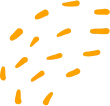🎯 What does this mean?
A line in 3D space represents the straightest possible path through three dimensions. Unlike 2D lines defined by slope, 3D lines require both a starting point and a direction vector to uniquely determine their path through space, extending infinitely in both directions.
🎯 Geometric Interpretation
A line in 3D space represents the path of constant direction through three dimensions. It requires both a position (starting point) and direction (orientation) to be uniquely defined. Unlike 2D lines, 3D lines can be skew (non-intersecting and non-parallel), adding complexity to spatial relationships.
\[ \vec{r} \]
Position vector - represents any point on the line as a vector from origin
\[ \vec{a} \]
Initial position vector - a known point on the line
\[ \vec{b} \]
Direction vector - indicates the direction and orientation of the line
\[ t \]
Parameter - scalar that determines position along the line
\[ (x_0, y_0, z_0) \]
Known point coordinates - specific point through which the line passes
\[ (l, m, n) \]
Direction ratios - components of direction vector, proportional values
\[ \alpha, \beta, \gamma \]
Direction angles - angles line makes with positive x, y, z axes respectively
\[ \cos\alpha, \cos\beta, \cos\gamma \]
Direction cosines - cosines of direction angles, components of unit direction vector
\[ d \]
Distance - from point to line or between two skew lines
\[ \theta \]
Angle between lines - measured between their direction vectors
\[ \vec{b_1} \times \vec{b_2} \]
Cross product of direction vectors - perpendicular to both lines
\[ \text{Skew Lines} \]
Lines that neither intersect nor are parallel - unique to 3D geometry
🎯 Essential Insight: A 3D line is a straight path requiring both a starting point and a direction - like giving someone an address and telling them which way to walk infinitely! 📊
🚀 Real-World Applications
✈️ Aviation & Navigation
Flight Paths & Trajectory Planning
Aircraft flight paths, missile trajectories, and satellite orbits use 3D line equations to calculate optimal routes and collision avoidance in three-dimensional space
🎮 Computer Graphics & Gaming
Ray Tracing & 3D Rendering
Ray tracing algorithms, collision detection, and 3D object intersection calculations rely on 3D line mathematics for realistic lighting and physics simulations
🏗️ Engineering & Architecture
Structural Design & Construction
Building frameworks, cable routing, pipeline design, and structural analysis use 3D line geometry to ensure precise spatial relationships and load calculations
🔬 Physics & Robotics
Motion Analysis & Path Planning
Particle trajectories, robot arm movements, and mechanical linkage analysis employ 3D line equations to model linear motion and spatial relationships
The Magic: Aviation: 3D flight path optimization and navigation, Graphics: Ray tracing and collision detection, Engineering: Structural frameworks and spatial design, Physics: Particle motion and robotic path planning
Before memorizing equations, develop this core intuition about 3D lines:
Key Insight: A 3D line is like giving someone a starting location and telling them to walk in a specific direction forever - you need both "where to start" (position vector) and "which way to go" (direction vector) to uniquely define the path!
💡 Why this matters:
🔋 Real-World Power:
- Aviation: Flight paths require starting position and directional heading for navigation
- Graphics: Ray tracing simulates light paths from points in specific directions
- Engineering: Structural elements like beams and cables follow straight-line paths
- Robotics: Robot movements require precise positioning and directional control
🧠 Mathematical Insight:
- Vector form r⃗ = a⃗ + tb⃗ captures both position and direction information
- Parameter t allows movement along the line in both directions
- Direction ratios provide proportional relationships without magnitude
🚀 Study Strategy:
1
Understand Vector Form 📐
- Start with: r⃗ = a⃗ + tb⃗ (position = start + parameter × direction)
- Picture: Starting point a⃗, then walking distance t in direction b⃗
- Key insight: "Where do I start and which way do I go?"
2
Master Different Forms 📋
- Vector form: Best for computations and understanding concept
- Parametric form: Shows x, y, z coordinates explicitly as functions of t
- Symmetric form: Eliminates parameter, shows proportional relationships
3
Explore 3D Relationships 🔗
- Parallel lines: Same direction vector (up to scalar multiple)
- Perpendicular lines: Direction vectors have zero dot product
- Skew lines: Neither parallel nor intersecting (unique to 3D)
4
Connect to Applications 🎯
- Navigation: GPS coordinates plus heading direction for travel
- Graphics: Light rays from sources in specific directions
- Engineering: Structural members with defined endpoints and orientations
When you see 3D lines as "point plus direction," three-dimensional geometry becomes a powerful tool for modeling motion, navigation, structural design, and countless spatial relationships in our 3D world!
Memory Trick: "Lines Lead Through Infinite Neat Estimations" - POSITION: Starting point location, DIRECTION: Which way to travel, PARAMETER: How far along the path
🔑 Key Properties of 3D Lines
📐
Requires Position and Direction
Unlike 2D lines, 3D lines need both a point and direction vector
Infinite extension in both directions along the direction vector
📈
Parametric Nature
Parameter t controls position along the line continuously
Different parameter values give different points on same line
🔗
Skew Line Possibility
Two lines in 3D can be skew (neither parallel nor intersecting)
Unique property not possible in 2D geometry
🎯
Direction Cosine Properties
Direction cosines satisfy cos²α + cos²β + cos²γ = 1
Provide normalized orientation information in 3D space
Universal Insight: 3D lines extend the concept of "straight path" into three dimensions, requiring both starting position and directional information to navigate through space!
Vector Form: r⃗ = a⃗ + tb⃗ combines position and direction in one equation
Direction Vectors: Determine line orientation and parallel/perpendicular relationships
Skew Lines: Unique 3D property - lines that neither meet nor are parallel
Applications: Navigation systems, computer graphics, structural engineering, and robotics



